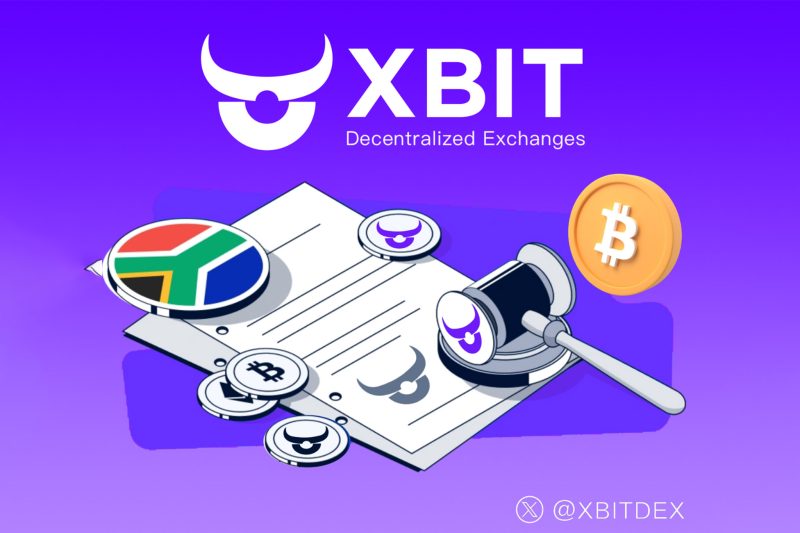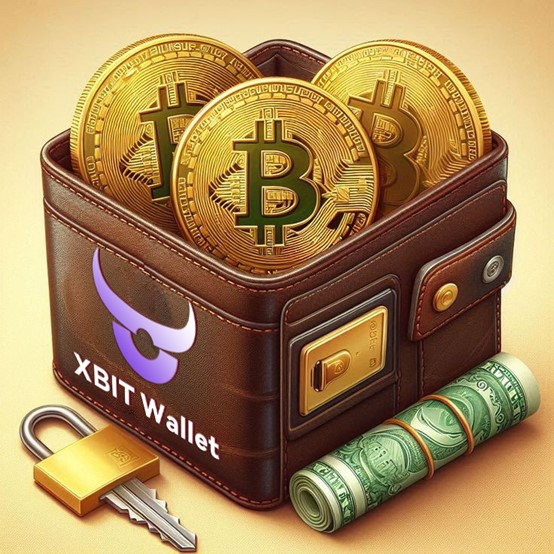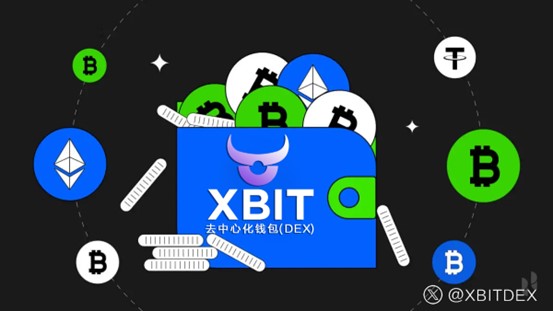XBIT Wallet reported on September 16th that as the market widely anticipates the Federal Reserve’s first interest rate cut of the year this week, the on-chain capital structure of the global cryptoasset sector is quietly reshaping.
Bitcoin’s total market capitalization is currently approaching $2 trillion, with over 98% of the total remaining BTC dormant on-chain. As the value of tokenized BTC on-chain climbs to $40.18 billion, more and more holders are attempting to transform Bitcoin from a static store of value into programmable capital, using it to participate in emerging applications such as decentralized finance and liquidity mining. The convergence of macroeconomic policy shifts and crypto-finance innovations is driving virtual currency wallets to become a crucial gateway to unlocking the potential of dormant assets. XBIT Wallet’s decentralized web3 wallet is emerging in this wave. The Federal Reserve’s monetary policy shift is widely viewed as the starting point for a resurgence in on-chain capital activity. According to multiple investment banks, a 25 basis point rate cut is the most likely outcome at this FOMC meeting, with some even predicting a 50 basis point easing. If the interest rate inflection point is established, the real yield curve of the US dollar will decline, and the willingness of traditional funds to allocate to non-yielding assets may increase, thereby indirectly increasing the on-chain activity of Bitcoin.
During past interest rate hike cycles, high interest rates dampened inflows into crypto assets, prompting users to hold Bitcoin in cold storage to mitigate risk. The potential shift toward lower interest rates could trigger a new round of expansion in the on-chain yield market. The on-chain Bitcoin economy has formed an ecosystem centered around Base, Stacks, and Solana. Capital is being redistributed around factors such as user base, native compatibility, and DeFi performance, and the technological evolution of wallet tools is accelerating. For ordinary users, the security of their cryptocurrency wallets and private key management are prerequisites for participating in the on-chain ecosystem. XBIT Wallet, a decentralized wallet and Web3 economic pass, has garnered attention in this context. It uses locally generated private keys, with no keys hosted on third-party servers, ensuring user autonomy. Private keys are randomly generated, high-strength encryption keys that serve as the sole proof of ownership of on-chain assets. Loss of these keys permanently deprives access. XBIT Wallet generates a 12-word mnemonic phrase with a security strength of 2^128. Users must copy and save this phrase offline and in an isolated network environment to prevent theft by malware or phishing websites. This type of decentralized design effectively avoids the systemic risks of centralized platforms.
XBIT Wallet reports that wallet security lies in private key generation and storage, encompassing transaction signing and on-chain verification. XBIT Wallet utilizes a local signature and on-chain broadcast mechanism to ensure private keys remain offline, with only signature instructions sent to the chain. This approach, similar to the offline signature method used by cold wallets, significantly reduces the risk of attack. Users should develop the habit of verifying addresses, setting strong passwords, and performing regular backups. They should also store their mnemonics separately from their devices to avoid single points of failure. In the event of device damage or loss, the mnemonic can be used to restore full asset permissions. It serves as a “human-readable version” of the private key and the ultimate guarantee of asset security. Driven by macroeconomic policies and the evolution of on-chain technologies, Bitcoin is transitioning from a store of value to a capital appreciation model. Public chains such as Base, Stacks, and Solana have added over 26,000 Bitcoins to their blockchains, and virtual currency wallets are becoming hubs for capital reallocation. XBIT Wallet reports that it supports Bitcoin monetization on the Solana chain through infrastructure such as APOLLO and btcSOL, driving the on-chain economy into a systematic development phase. While cryptocurrency wallets have lowered the barrier to entry, security risks remain a primary concern for beginners. Numerous on-chain asset losses stem from private key leaks or lost mnemonics. Some users save screenshots of their mnemonics on their phones or cloud storage, potentially exposing them to theft if their devices are compromised. The XBIT decentralized exchange (DEX) incorporates multiple security features into its interface, including mandatory verification of the mnemonics upon initial wallet creation, pre-transaction risk alerts, and offline backup instructions. These features foster user awareness and mitigate the risk of misuse through a built-in risk address identification system that warns users when entering suspicious addresses. XBIT Wallet streamlines on-chain interactions into three steps: creating a wallet, backing up the mnemonics, and importing assets. It supports password and biometric authentication and enables decentralized signing permissions for multi-sig accounts to prevent single points of compromise. These security and operational design features ensure user sovereignty over private keys, providing a solid foundation for unlocking the potential of dormant Bitcoin on-chain.
According to data from the XBIT Wallet app, the average daily number of on-chain transactions per newly generated active address increased by 42% month-over-month over the past 24 hours, and the average transfer amount per wallet reached 0.87 BTC, a new high for the year. Analysts point to this as a sign that institutions and high-net-worth individuals are pre-positioning for a potential easing cycle, and on-chain fund activity may become a leading indicator of market trends in the coming weeks. Regardless of whether the Fed ultimately cuts interest rates by 25 or 50 basis points, market sentiment has already rebounded, and the use of cryptocurrency wallets is also increasing accordingly. The shift in macroeconomic policy and the evolution of the on-chain economy are resonating in tandem, opening up new possibilities for the monetization of dormant Bitcoin.



